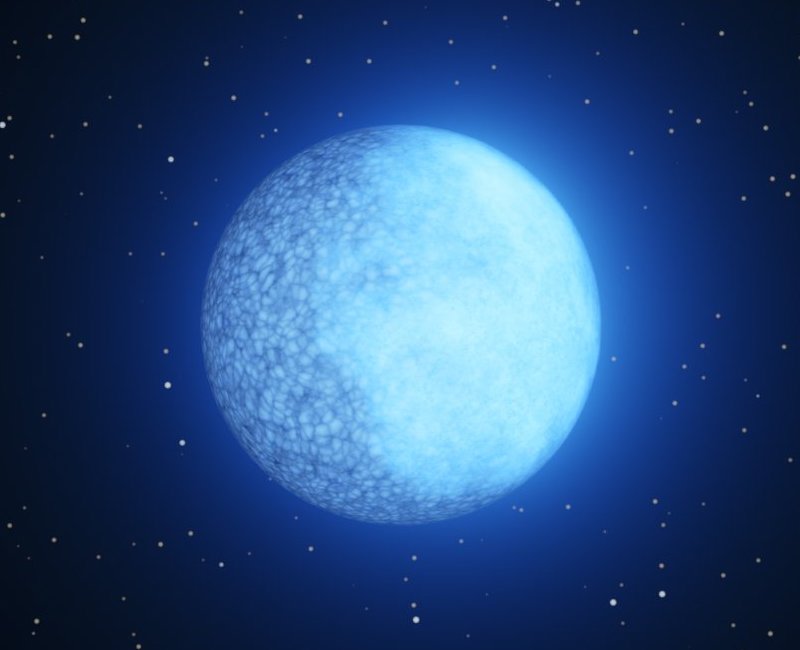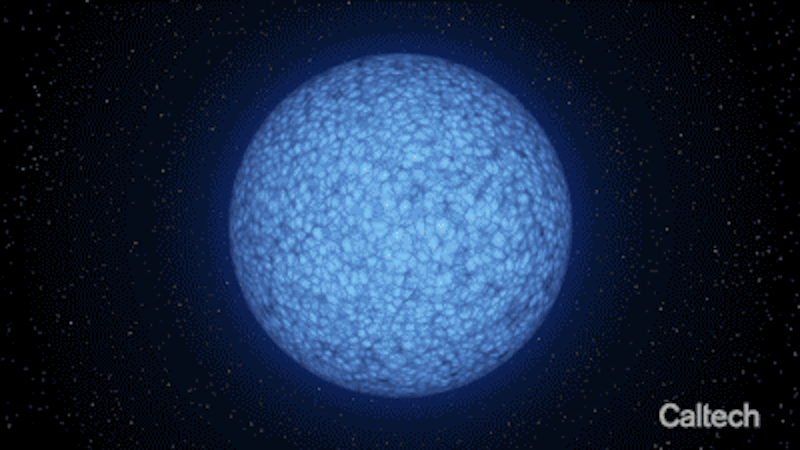
Like other varieties of stars, white dwarf stars are generally pretty similar to each other. Except when they’re not. An international team of astronomers said on July 19, 2023, that they’ve discovered a white dwarf star that’s noticeably different. Oddly enough, it’s two-faced. One half is composed of hydrogen, while the other half is made of helium. Strange, right?
In fact, it’s the first known white dwarf of its kind.
The researchers published their peer-reviewed findings in Nature on July 19, 2023.
A 2-faced white dwarf star
The astronomers discovered the white dwarf star, nicknamed Janus after the two-faced Roman god of transition, using the Zwicky Transient Facility (ZTF) instrument at Caltech’s Palomar Observatory. The researchers were searching for highly magnetized white dwarfs. That’s when they found Janus. The paper states:
Here we report observations of ZTF J203349.8+322901.1, a transitioning white dwarf with two faces: one side of its atmosphere is dominated by hydrogen and the other one by helium.
Interestingly, Janus experienced rapid changes in brightness. The research team then used the CHIMERA instrument at Palomar, as well as HiPERCAM on the Gran Telescopio Canarias in Spain’s Canary Islands, to investigate further. They also found that Janus rotates on its axis once every 15 minutes.
Lead author Ilaria Caiazzo, a postdoctoral scholar at Caltech, said:
The surface of the white dwarf completely changes from one side to the other. When I show the observations to people, they are blown away.
Additional observations
Subsequently, the researchers conducted additional observations using the W. M. Keck Observatory on Maunakea in Hawaii. That’s when Janus revealed its double-faced nature. Using a spectrometer, Caiazzo and her colleagues found hydrogen on the side of the white dwarf facing us at the time. But when the other side of the white dwarf rotated into view, it was found to contain helium instead.
Why 2 such different sides?
So what could cause the star to be so different from one side to the other? One possibility, the researchers say, is that the star is undergoing a rare phase of evolution. This phase involves both hydrogen and helium. Caiazzo said:
Not all, but some white dwarfs transition from being hydrogen- to helium-dominated on their surface. We might have possibly caught one such white dwarf in the act.
Hydrogen tends to float to the top of white dwarf atmospheres. Heavier elements, meanwhile, sink to the core. Scientists think all of these elements gradually mix together as the white dwarf cools. It’s also thought that helium may eventually become dominant in some, but all, cases.
However, that still doesn’t quite explain why Janus has two such different sides.

Magnetic fields
The rest of the answer may have to do with magnetic fields. Caiazzo explained:
Magnetic fields around cosmic bodies tend to be asymmetric, or stronger on one side. Magnetic fields can prevent the mixing of materials. So, if the magnetic field is stronger on one side, then that side would have less mixing and thus more hydrogen.
Another possibility is that the magnetic fields change the pressure and density of the atmospheric gases on Janus. Co-author James Fuller at Caltech said:
The magnetic fields may lead to lower gas pressures in the atmosphere, and this may allow a hydrogen ‘ocean’ to form where the magnetic fields are strongest. We don’t know which of these theories are correct, but we can’t think of any other way to explain the asymmetric sides without magnetic fields.
The researchers are hopeful that more white dwarf stars like Janus will be discovered. Since Janus exists, there are likely others as well. Future sky surveys from the Zwicky Transient Facility should be able to find them. As Caiazzo noted,
ZTF is very good at finding strange objects.
What is a white dwarf star?
White dwarfs are called stars, and that is technically true. However, they are actually the dense remaining cores of dead stars. The stars have exhausted their fuel supplies and blasted their gases out into space. They are typically about the size of Earth, but with masses similar to our sun.
And indeed, our own sun will one day become a white dwarf.
Apart from ones that explode in supernovae, most stars eventually become white dwarfs. First, the star inflates enormously to become a red giant. Then, as it evaporates, it leaves behind its stellar core … a new white dwarf.
Bottom line: For the 1st time, astronomers have discovered an unusual white dwarf star where one side is composed of hydrogen and the other side is helium.
Source: A rotating white dwarf shows different compositions on its opposite faces











